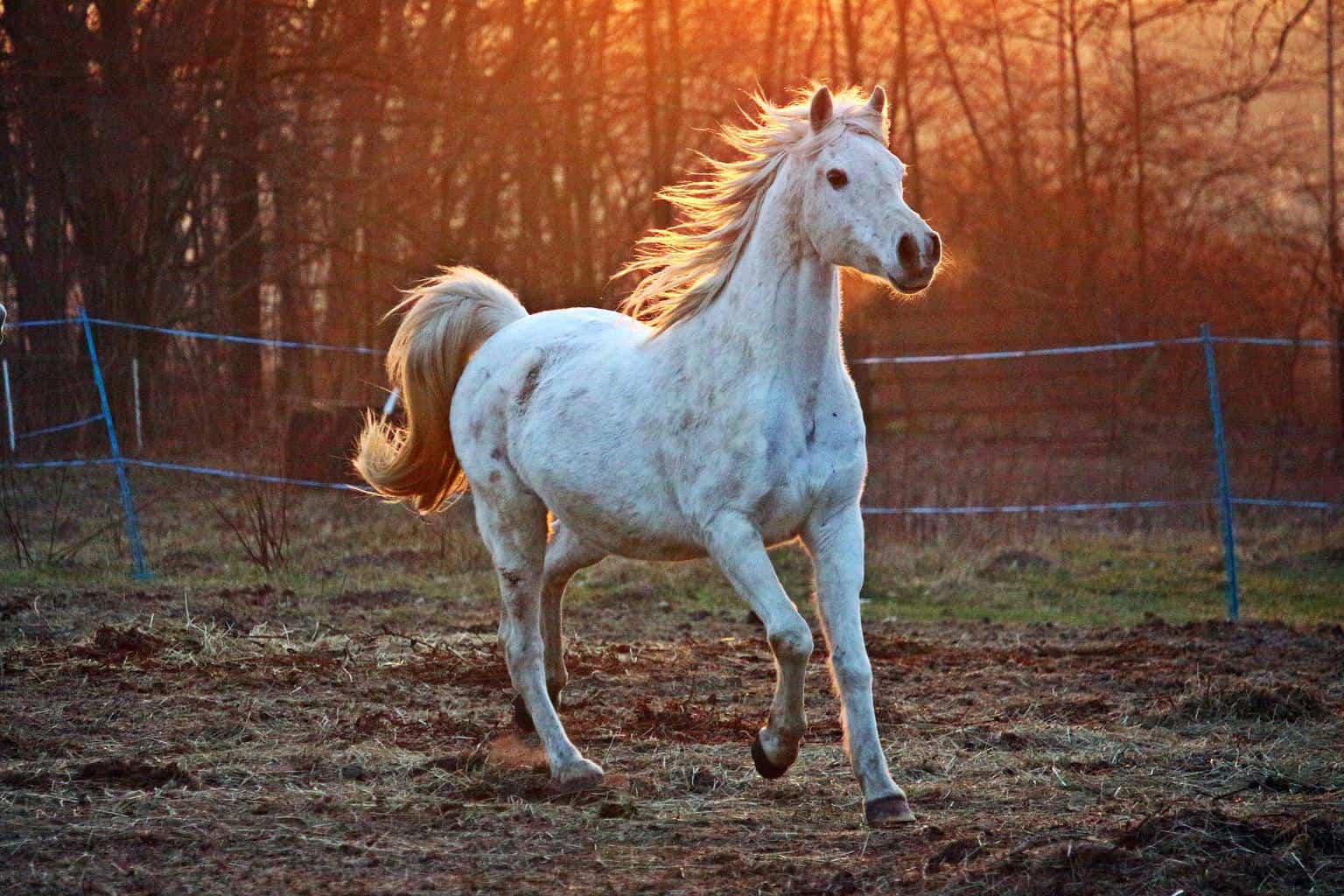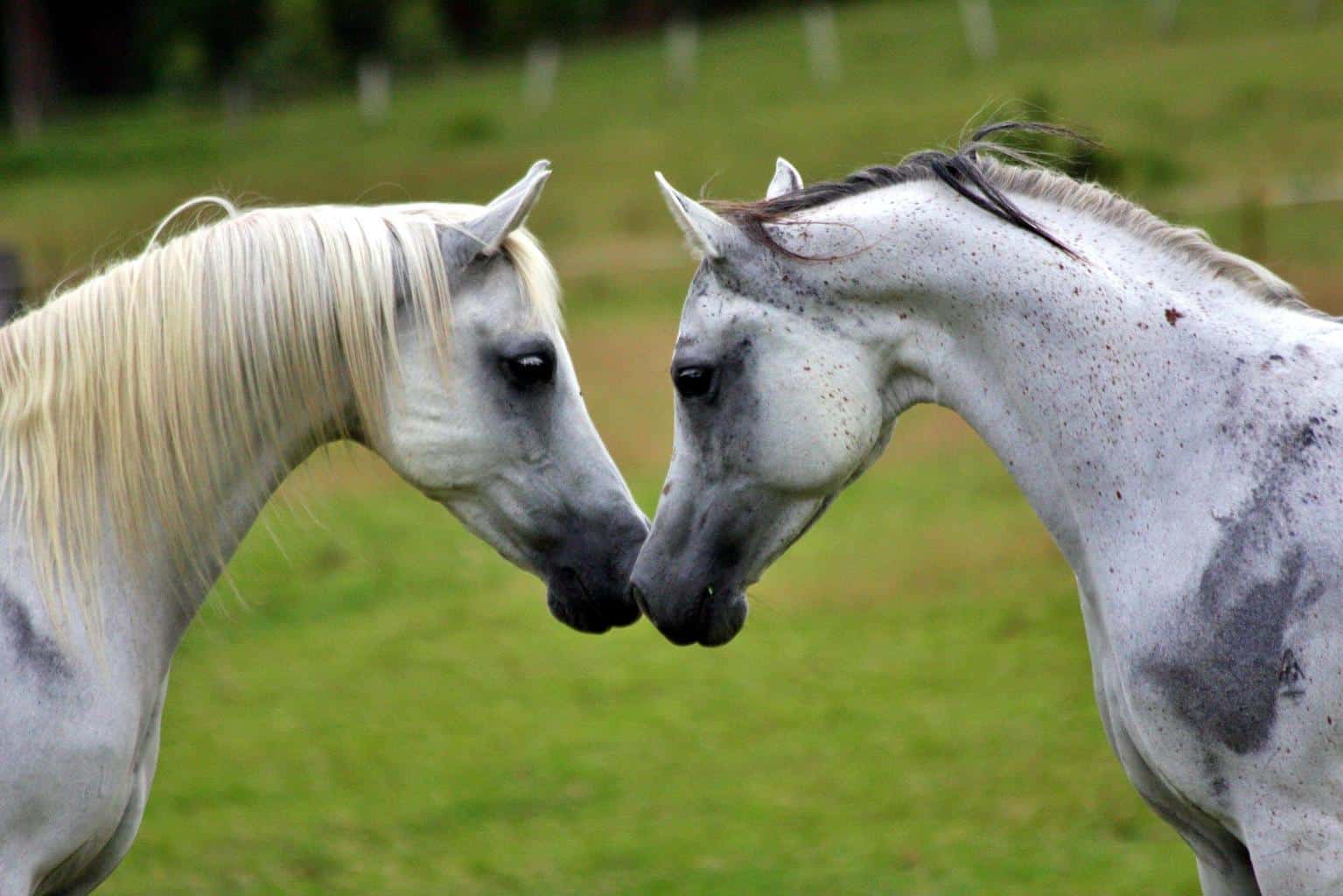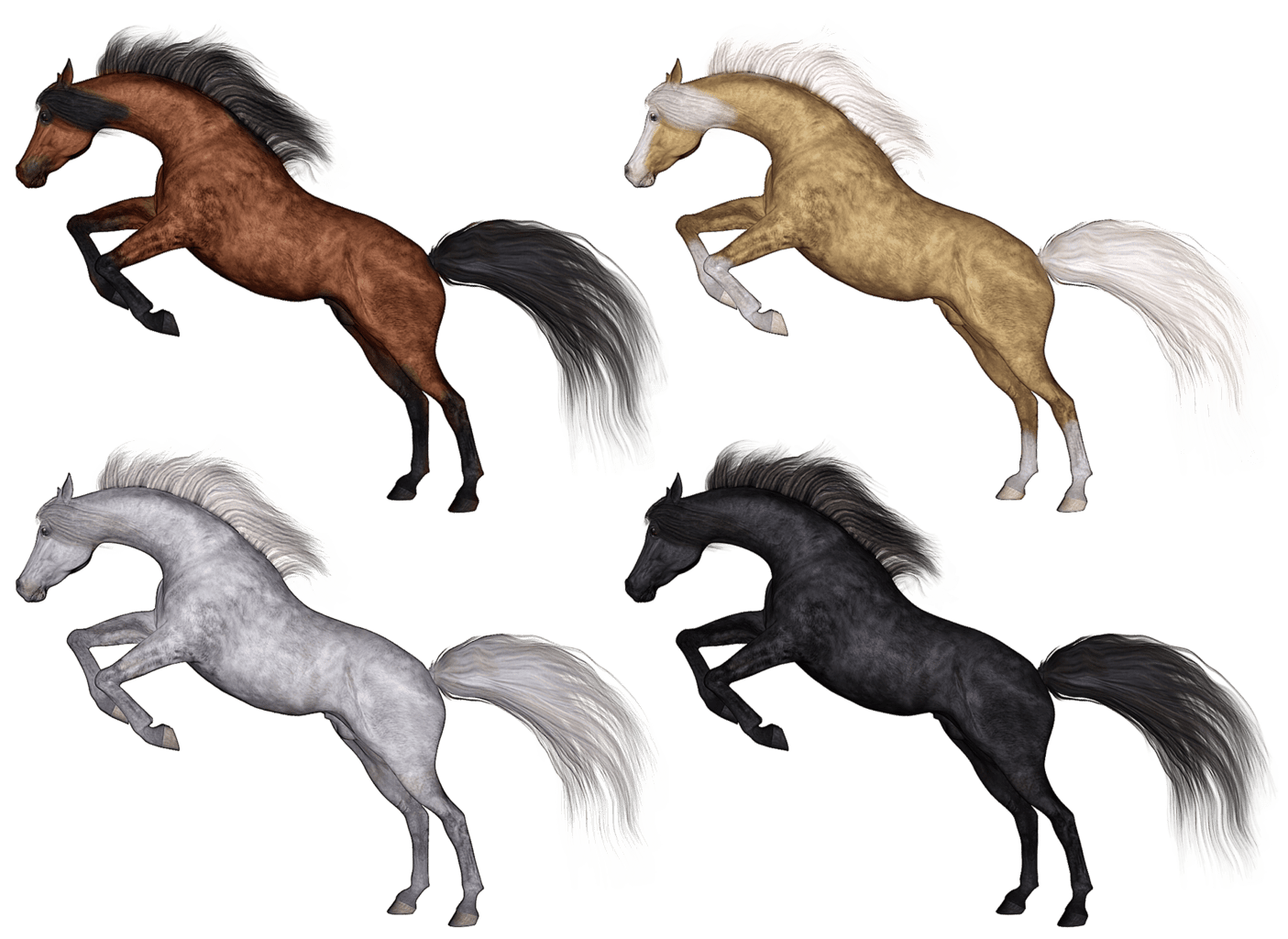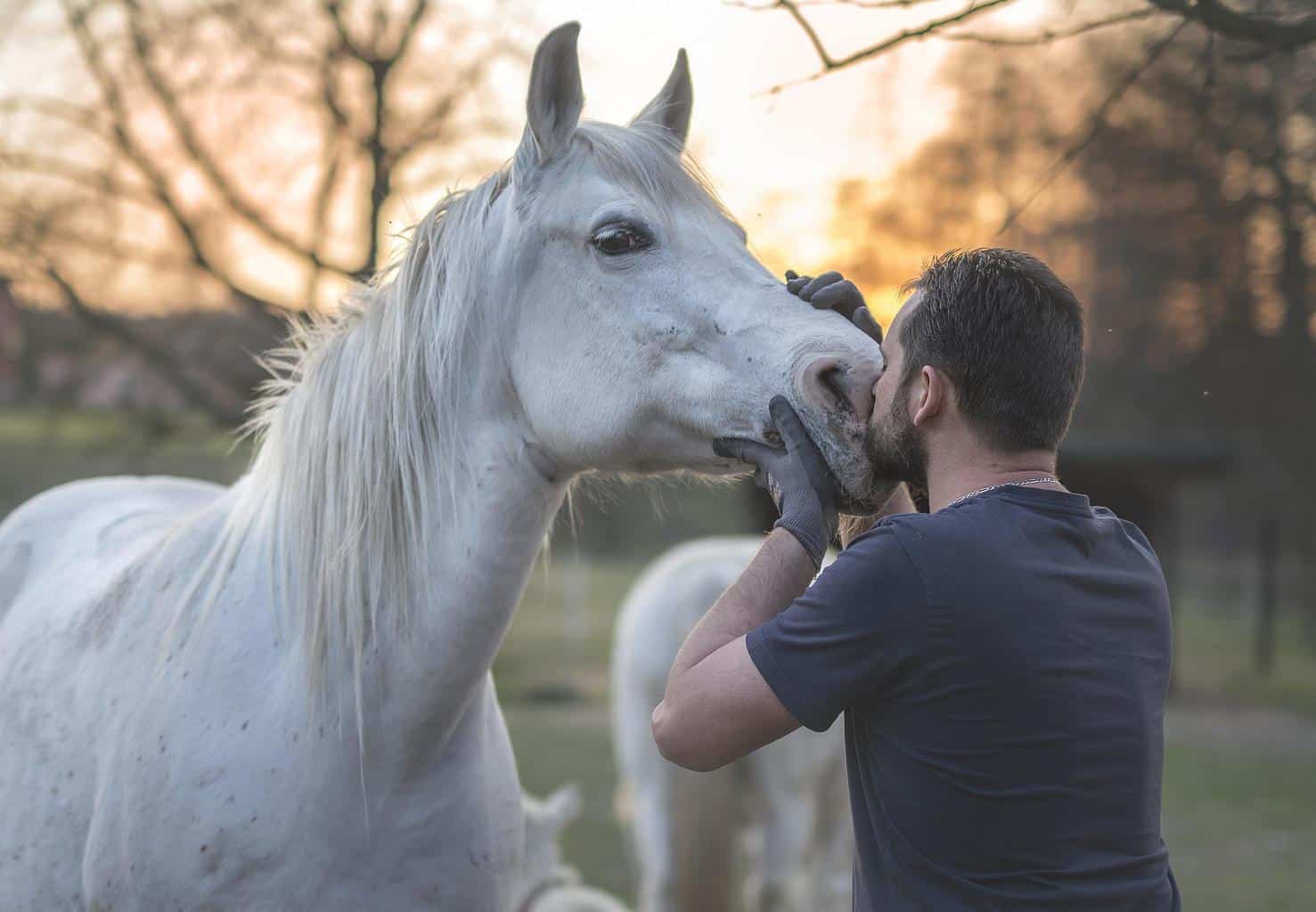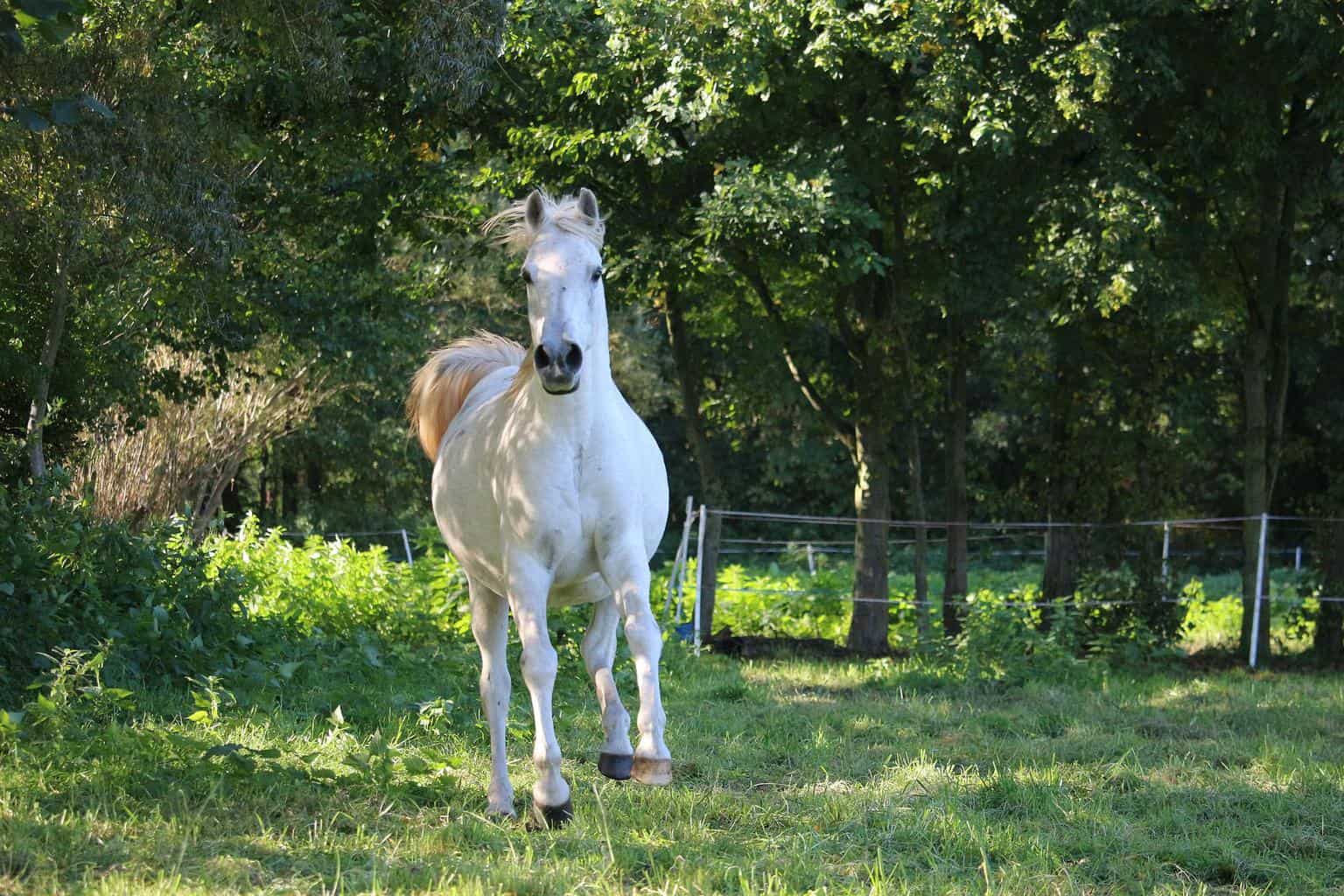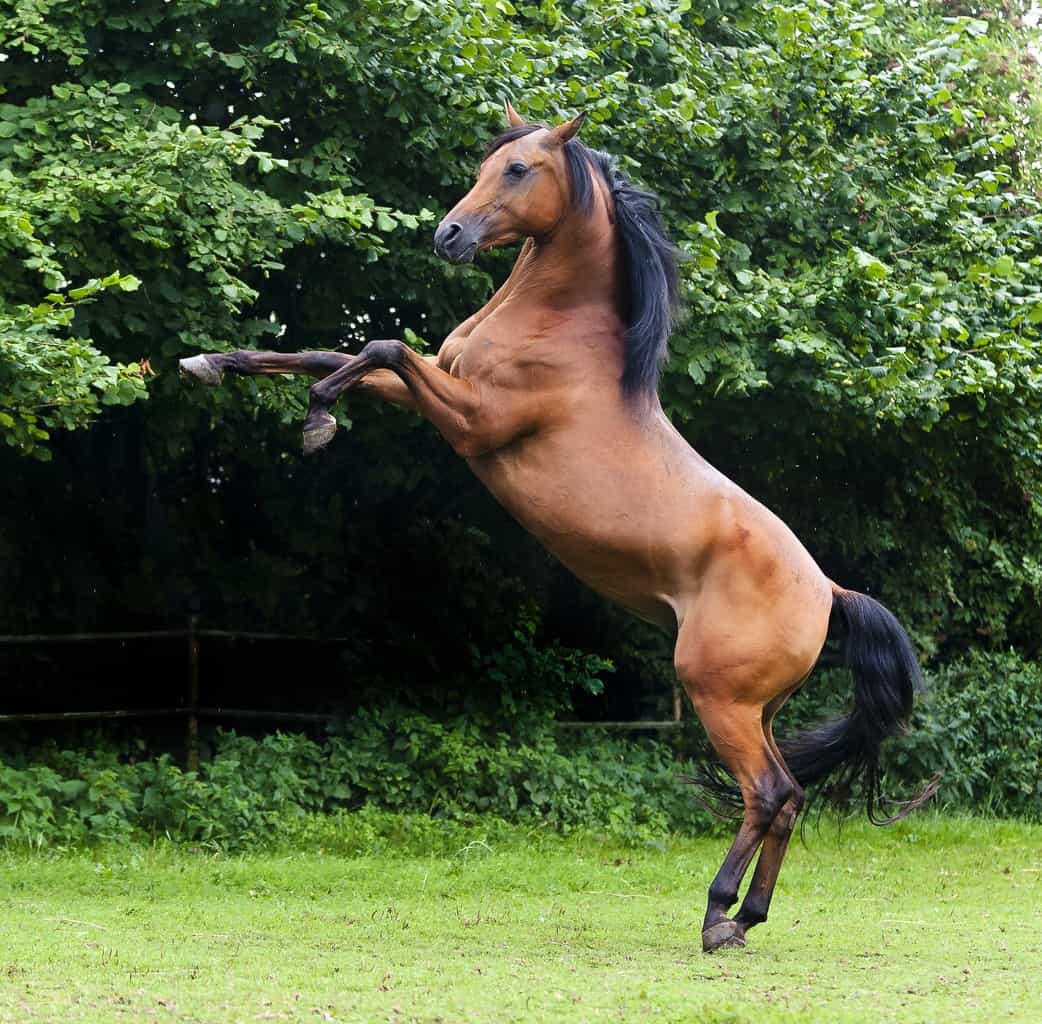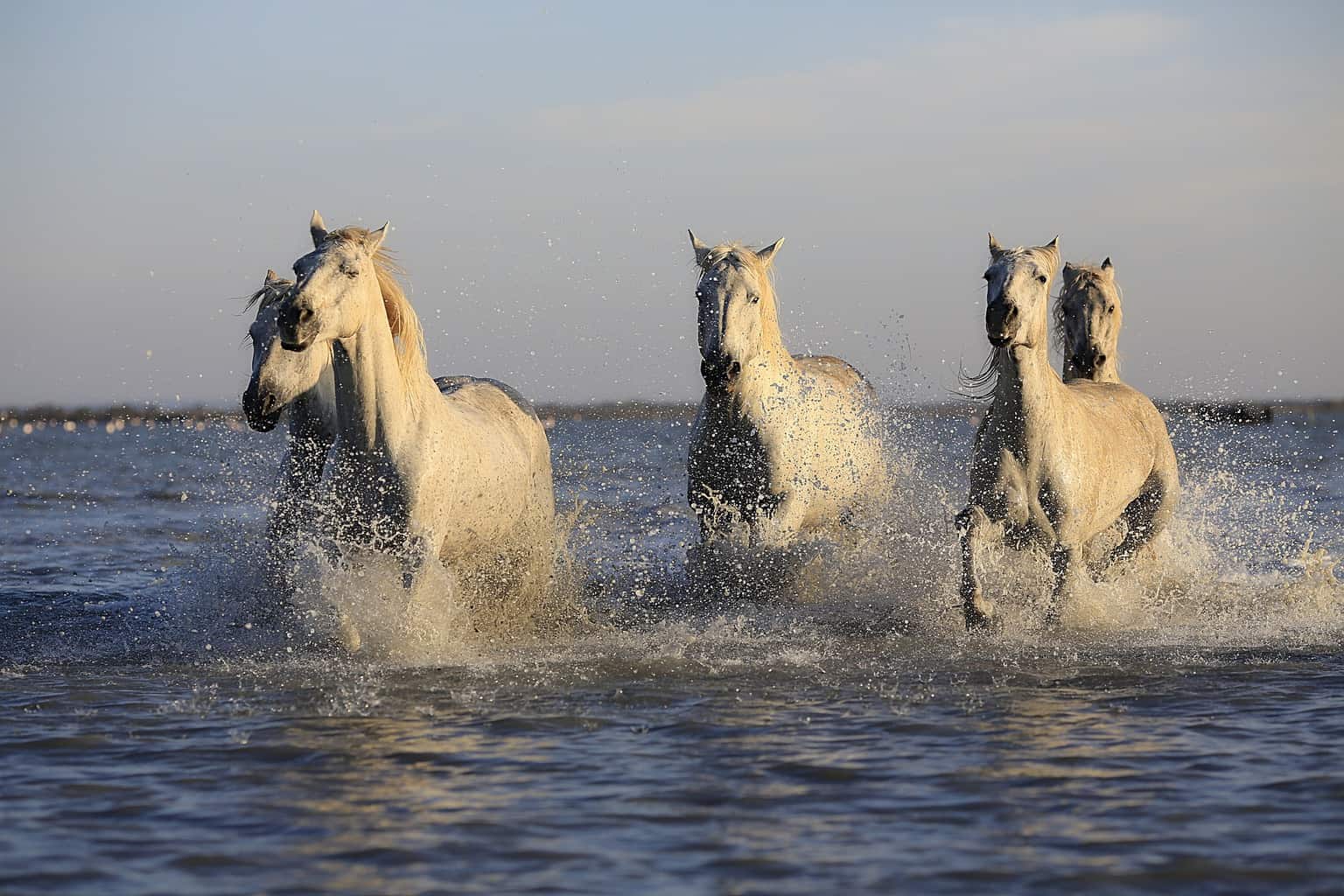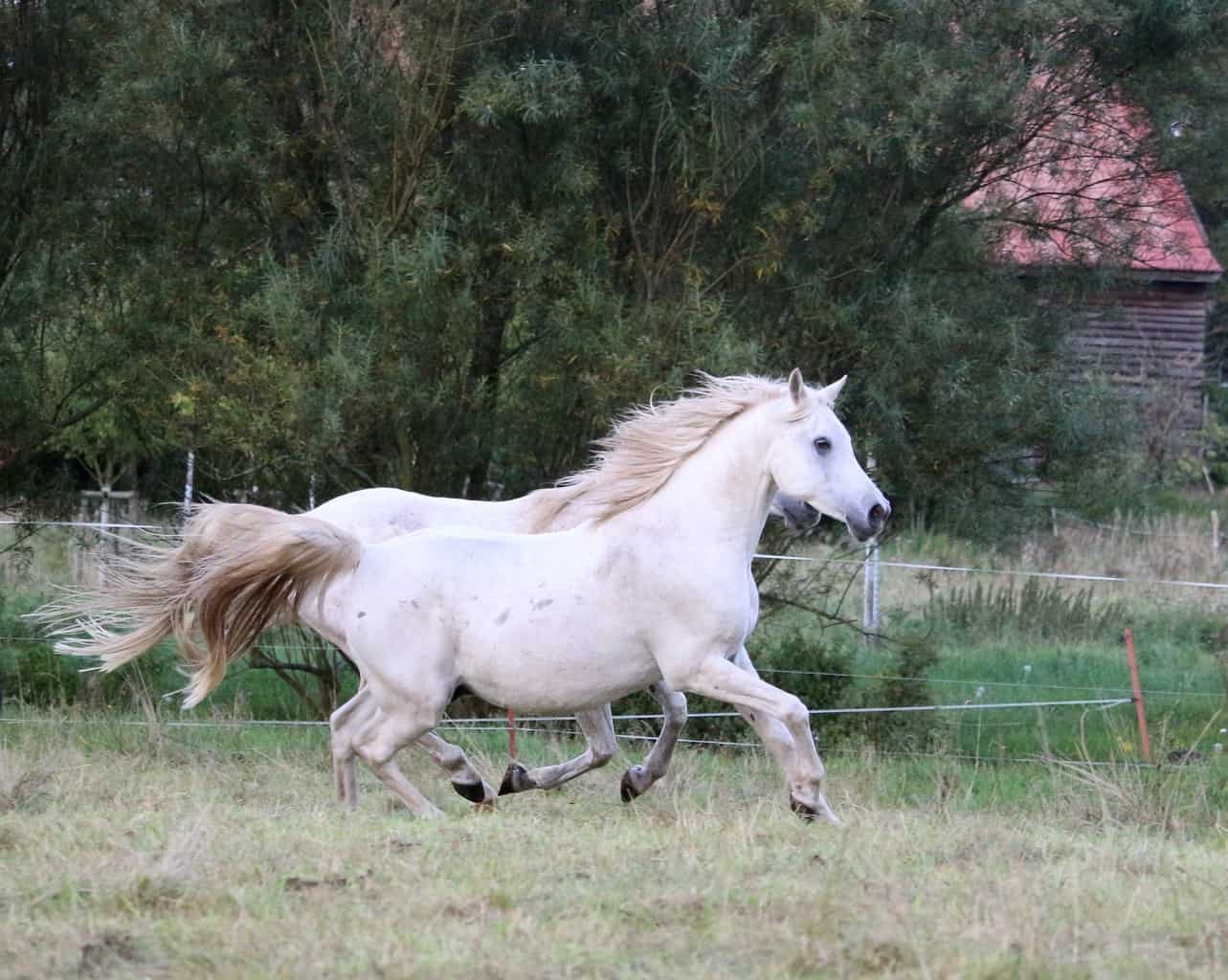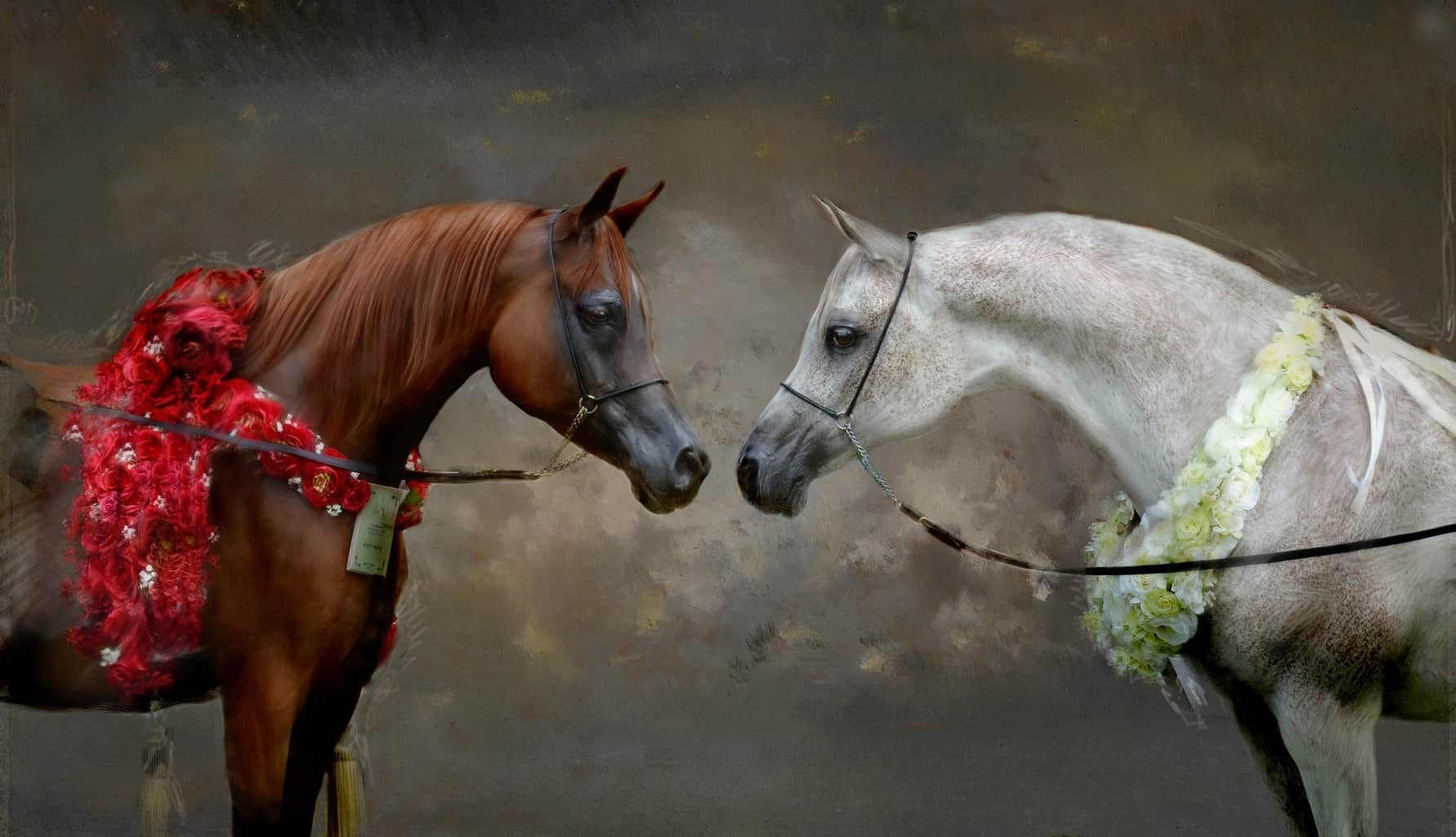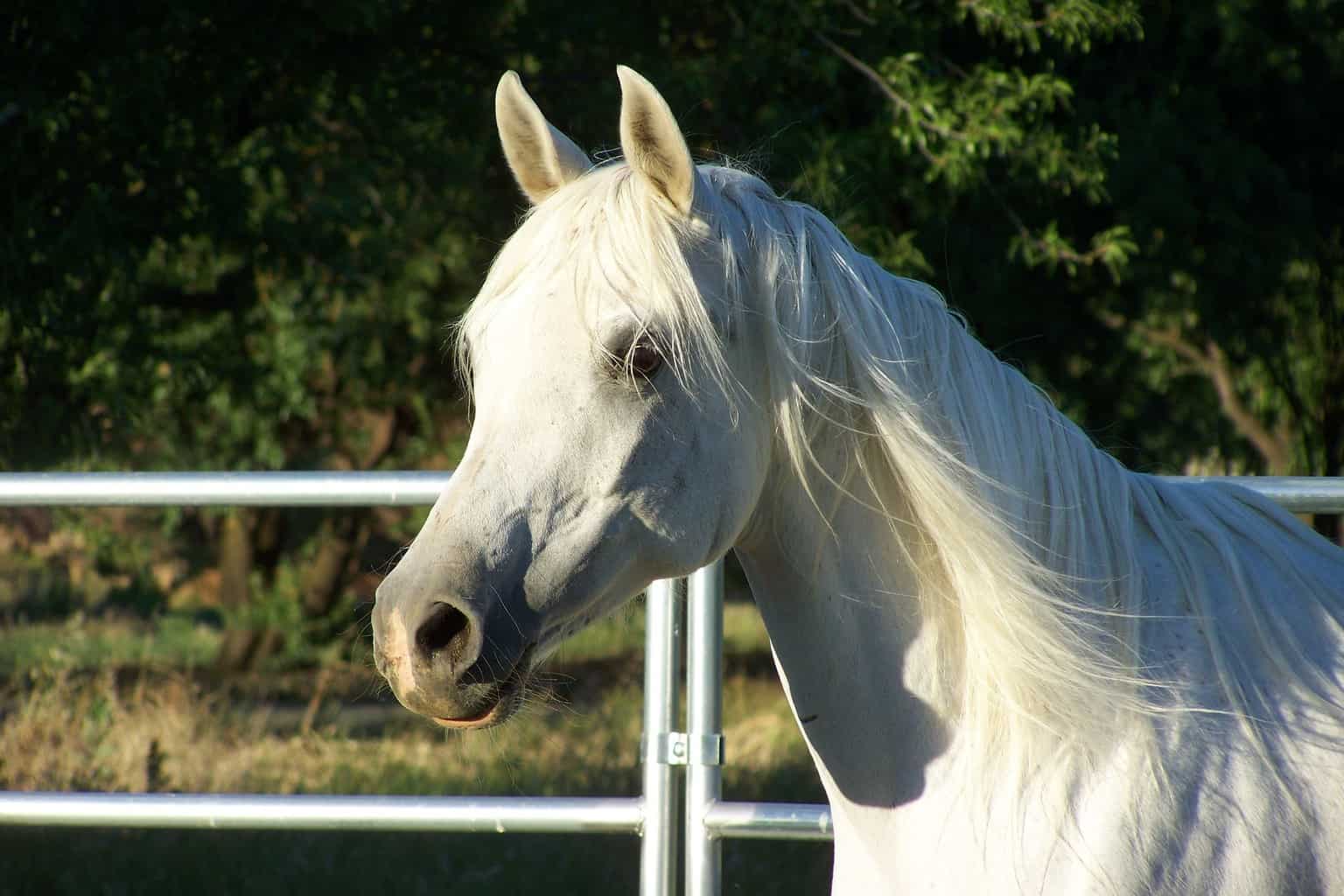- Best Antibiotics for Horse Wounds: What to Expect When Your Horse Has an Injury - September 20, 2023
- Bronco vs Mustang Horse: Are They the Same? - September 8, 2023
- Thoroughbred vs Quarter Horse - September 8, 2023
- Arabian Horse at a Glance
- Arabian Horse Quick Facts
- Arabian Horse Overview
- How to Identify Arabian Horses
- Arabian Horse Lifespan
- Arabian Horse Appearance and Varieties
- Arabian Horse Human Interactions and Training
- How to Care for an Arabian Horse
- Arabian Horse Diet
- Arabian Horse Breeding
- Arabian Horse Cost
- Where to Buy an Arabian Horse
- Famous Arabian Horses
- FAQs
- Research Citations:
The Arabian horse is a breed that goes back thousands of years. With its even temperament and stunning looks, the Arabian horse has been popular throughout the ages.
Arabian horses have incredible endurance and stamina limited to only the most robust breeds. Yet, these horses are relatively slight in stature. The most identifiable characteristic of the Arabian is the dished face, finely chiseled head, long arching neck, and high tail carriage, which gives it the famous ‘floating trot.’
The entire appearance of the Arabian horse exudes nobility, intelligence, courage, and energy. Learn more about this breed with this Arabian horse guide!
Arabian Horse at a Glance
Arabian horses were bred mainly for their athleticism and endurance, even in the harshest of conditions. They have a determination and stamina that is truly special, and combined with their compact body, this breed has superior balance and strength.
The Arabian horse excels in almost every horse sport and is not a horse happy to live in a backyard. This breed can travel long distances, in intense heat, over challenging terrain, and is the horse of choice for long-distance trail competitions.
The Arabian is also beautifully elegant and has great intelligence, making it an impressive breed in the show ring.
Arabian Horse Quick Facts
| Species | Horse |
| Horse Family | Equidae |
| Horse Breed | Arabian |
| Common Names |
|
| Country of Origin | The Middle East, most notably Arabian peninsula |
| Height | 14.1 to 15.1 hands (57 to 61 inches, 145 to 155 cm) |
| Weight | 800 to 1,000 pounds (360 to 450 kg) |
| Color | Bay, black, chestnut, or gray. Occasional dominant white, sabino, or rabicano patterns. |
| Coat Quality (curly haired, short, thick) | Fine and Silky |
| Body Hair (feathered, lush or thin tails/manes) | Thin |
| Temperament | Exceedingly friendly, even-tempered, eager to learn, playful, loyal. |
| Lifespan | 30 Years |
| Purpose (racing, work horses, etc.) | Endurance racing, trial riding, ranch work, transportation, show jumping, dressage, rescue and recovery, rehabilitation therapy programs. |
Arabian Horse Overview
Arabian horses were tentatively bred for distinctive traits, including a remarkable capacity to form cooperative relationships and strong bonds with people. Arabians are fast to learn, eager to please, and good-natured and intelligent horses that are best suited to experienced handlers. The Arabian is a powerful horse, capable of extreme endurance.
As outstanding as the mind of the Arabian is, the beauty of this horse is equally exceptional. The Arabian possesses attractive physical qualities and is easily recognizable by its long, arched neck, wedge-shaped head, huge, expressive eyes, and compact body. The USEF breed standard requires Arabians to have solid bone and correct conformation.
Arabian horses come in various colors, but the most typical is gray. And the hair is fine and silky.
How to Identify Arabian Horses
Sadly, you will find a lot of horses for sale or adoption that are advertised as Arabians. This won’t always be the case – far from it. But, there are a few identifiable features exclusive to purebred Arabians that you can look out for.
These are:
- Head: Smaller than most, slightly concave below the eyes, large nostrils, small muzzle.
- Eyes: Expressive, large, round eyes set well apart but comparatively close to the muzzle.
- Ears: Small ears (mares larger than stallions) that have inward curved tips and are thin and well-shaped.
- Neck: Long and arched.
- Back: Short.
- Tail: High tail carriage.
Arabians have a straight, short back and usually one less vertebra than other breeds. They have perfect symmetry and balance, with well-sprung ribs, a deep chest, legs that are thick and strong, and a pelvic bone position more horizontal than is common with most breeds.
Arabian Horse Lifespan
Typically, Arabian horses will live between 25 and 30 years which is similar to most horse breeds. However, there have been documented instances of Arabians living well into their 40s, with the oldest known being a 46-year-old Arabian mare called Magic – which is around 140 in human years!
Arabian Horse Appearance and Varieties
Some traits set the Arabian horse apart from other breeds, such as their high tail carriage and long, arched necks. The Arabian has a floating gate and is exceptionally smooth to ride, given its smaller-than-some size. The Arabian Horse Association recognizes coat colors of gray, black, chestnut, bray, and roan. The breed may not always be a solid color and can have socks, stockings, and white facial markings.
Arabian Horse Human Interactions and Training
Arabian horses are an extremely people-oriented breed that thrives on the company and attention of their owners. They’re eager to please and quick to learn, making them an excellent choice for active equestrians. This also means that they’re less suited to novice owners who may not know how to properly nurture the intelligence of the Arabian.
This breed will remain active well into its golden years and needs constant interaction and stimulation to stay as mentally fit. Arabians tend to be a hardy and healthy breed that are easily adaptable to different environments.
Arabian horses are noted for their loyal and loving personalities, and they’re highly responsive to training. However, this breed can be prone to being quite hot-blooded and can become very stressed if not handled correctly.
How to Care for an Arabian Horse
There isn’t a lot involved when taking care of the basic needs of an Arabian. This is because their ancestors were from harsh climates with little food or water, and they evolved to not only survive but to thrive. In fact, Arabians today often require less feeding than other breeds to maintain a healthy weight.
Like all horses, Arabians can be prone to some common horse health conditions, but there are only three which have a genetic link. These are:
- Severe Combined Immunodeficiency: The foal is born with no immune system and will likely pass away quickly from a common infection.
- Lavender Foal Syndrome: Several neurological problems. Foals born with Lavender Foal Syndrome will likely die, or be euthanized, shortly after birth.
- Cerebellar Abiotrophy: Neurological disorder affects coordination and balance that is often fatal in foals.
When it comes to behavior, Arabians are as intelligent as they are needy. In the wrong hands, Arabians can develop bad habits and become quite feral-like and aggressive. It is important to spend a lot of quality time with this breed, but more experienced handlers will find them a joy to work with.
Arabian Horse Diet
Like most horses, Arabians eat grains, quality hay, fresh grass, and some fruits and vegetables. They require a typically horse-healthy diet of proteins, carbohydrates, vitamins, minerals, fats, and water in their diet. You may find that your food bill goes down with an Arabian due to their breeding, ancestry, and stature.
Arabian Horse Breeding
Arabian horses were primarily bred for their stamina, strength, and ability to thrive in harsh conditions. Today, this breeding makes the Arabian excel in almost every equestrian sport. Arabians are suited to various activities, from long-distance trail competitions to the race track and show ring.
The friendly and fun-loving personality of the Arabian has led to them being used more and more in therapeutic services, as well as within search and rescue missions.
Arabian Horse Cost
Because Arabian horses are widely popular, they’re easy to come by at reputable breeders and horse rescues. There is a fairly large price spectrum for this breed, with a starting price point of around $5000 and it not being unheard of to pay $20,000 for an Arabian – those with prized bloodlines cost up to $150,000.
Where to Buy an Arabian Horse
If you’re sure that the Arabian is the horse for you, then you shouldn’t have much of a problem coming across this breed due to their popularity in the US; and around the world.
You can purchase Arabian horses at auctions, from trusted breeders, or from local shelters. However, before making any commitment, it is important to meet your prospective horse and spend some time with him/her – reputable breeders and shelters not only expect this, but some insist on it.
Here are some nationwide online marketplaces to try:
- ArabianHorse.org: The most comprehensive all-Arabian resource on the web.
- ArabianHorseExchange: If you can’t find what you’re looking for, there is a request form to complete to be notified when your ideal Arabian becomes available.
- equinenow: Filter your search via your individual criteria to make the results more relevant. Search by state, gender, color, skill level, age, height, and price range, to see more applicable listings.
- Horseplushumanesociety: This allows you to give a horse a second chance. These horses will have undergone trainer and veterinarian evaluations and come with full disclosures of any behavior problems.
Famous Arabian Horses
There are many notable Arabian horses in the history books that have played prominent roles, such as conducting important war tasks, winning races, and being the star of books and the silver screen.
Here are a few examples:
- Cass Ole: Won over 50 Championships and starred in the 1979 movie ‘The Black Stallion.’
- Marengo: Known for being fearless and obedient on the battlefield, Marengo was the favored horse of Napoleon Bonaparte.
- Marwan Al Shaqab: Winner of numerous world and national championships. This stallion has a stud fee of $20,000 and sires 50 foals annually.
- Thunder: Denver Broncos football team mascot since 1993.
- Flicka: This chestnut mare was the star of ‘My Friend Flicka,’ which was the first series shot in color and the first TV series produced by 20th Century Fox.
FAQs
Answer: While there isn’t a definitive date for the discovery or domestication of the Arabian horse, we do know that by 1,000 B.C., people in the Middle East had formed partnerships with horses that went on to become known as ‘Arabian.’
Answer: We know that Arabian horses arrived in the US in the 1700s. However, the Arabian Horse Registry of America was not founded until 1908.
Answer: Arabian horses don’t require any special grooming to keep their skin and coat in good condition. Regular brushing will maintain a healthy glow and keep the coat free from dirt, debris, and oils. To take care of the mane and tail, a detangler is a good idea. Additionally, a daily clean of the hooves will ensure foot comfort and allow you to check for any damages or injuries.
Answer: Because Arabian horses have a distinctive body shape, it is important to look for a saddle that has a shorter skirt, wider gullet, and more curves. There are breed-specific saddles for Arabians, but many owners find that western saddles can work well, too.


